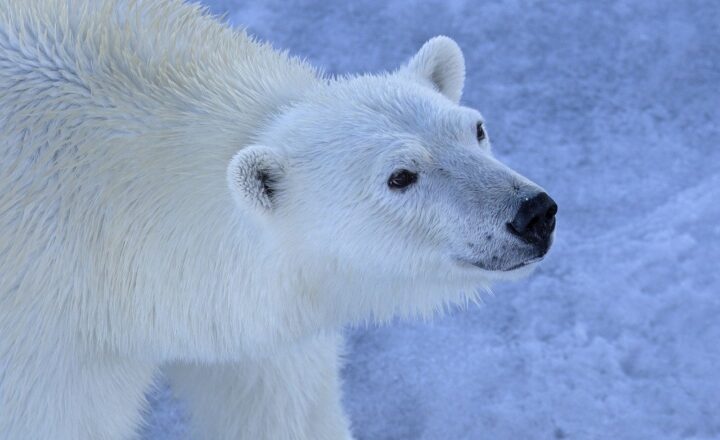Extreme Weather Events: Understanding Weird Phenomena through Science
November 18, 2024

Extreme weather events have become more frequent and intense, captivating the interest of scientists and the general public alike. From unprecedented hurricanes and heatwaves to bizarre snowstorms in tropical regions, these phenomena can leave us both awed and bewildered. In this article, we’ll delve into the science behind some of the weirdest weather patterns and explore how they relate to broader climate change trends.
1. What Constitutes Extreme Weather?
To begin, we need to define what extreme weather actually means. The National Weather Service (NWS) categorizes extreme weather as any severe and unusual weather conditions such as:
- Heatwaves: Extended periods of excessively high temperatures.
- Flooding: Overflowing of rivers and water bodies that inundate land.
- Hurricanes and Typhoons: Intense tropical storms characterized by swirling winds and heavy rains.
- Tornadoes: Rapidly rotating columns of air that touch the ground.
- Blizzards: Severe snowstorms with strong winds and low visibility.
Extreme weather is not just a collection of odd occurrences; it is often a stark manifestation of larger environmental changes and does not happen in isolation.
2. Climate Change: The Catalyst for Extreme Weather
Scientific evidence suggests that climate change is contributing to the frequency and severity of extreme weather events. Here’s how:
- Rising Global Temperatures: With average global temperatures increasing, heatwaves are expected to become more prolonged and intense. According to NASA, Earth’s average temperature has risen dramatically since the late 19th century, with the last decade being the hottest on record.
- Increased Water Vapor: Warmer air holds more moisture, resulting in more intense rain events. As the climate warms, the atmosphere’s water vapor capacity can lead to devastating floods.
- Changing Storm Paths: Climate change affects jet streams and ocean currents, altering storm tracks and making them more unpredictable. This can lead to areas that normally experience moderate weather suddenly facing extreme conditions.
- Melting Ice Caps: The loss of Arctic sea ice can impact weather patterns at lower latitudes, creating a domino effect that brings weird and extreme weather to unexpected places.
These factors combine to create a climate system that’s not only changing but also more volatile, leading scientists to predict that extreme weather will continue to exacerbate over the coming decades.
3. Case Studies of Weird Weather
Let’s explore some of the most unusual weather events recorded in recent years, highlighting the scientific explanations behind them:
a. The Polar Vortex: Winter’s Wrath
The Polar Vortex is a large area of low pressure and cold air surrounding the Earth’s poles. When the vortex weakens, it can allow frigid air to spill southward, resulting in extreme cold spells in places like the U.S. During the winter of 2019, parts of the Midwest experienced temperatures plummeting to -30°F, illustrating how this phenomenon affects weather patterns at lower latitudes.
b. Unprecedented Hurricane Seasons
The 2020 Atlantic hurricane season was record-breaking, with 30 named storms. Scientists attribute the increasing intensity of hurricanes to warmer ocean waters. As global temperatures rise, these bodies of water heat up, providing hurricanes with the energy needed to develop and sustain themselves, resulting in more powerful storms.
c. Snow in Unlikely Places
In 2021, towns in Texas experienced unusual snowfall, causing severe disruptions. An Arctic air mass moved south, breaking weather norms in a region not accustomed to winter weather. This event exemplified how shifting weather patterns can lead to unexpected snowfall in typically warm climates.
d. The Mega-Drought in the Western U.S.
Contrasting the extreme rainfall experienced in some parts of the world, the Western U.S. is facing one of its worst droughts in modern history. This discrepancy is largely linked to changing precipitation patterns due to climate change, emphasizing how varying factors contribute to extreme weather.
4. How To Prepare for Extreme Weather Events
As extreme weather events become more common, preparation becomes essential. Here are some strategies to mitigate risks:
- Emergency Kits: Keep a well-stocked emergency kit that includes provisions, medication, and essential documents.
- Stay Informed: Monitor weather alerts and advisories through reliable sources to stay aware of impending threats.
- Community Preparedness: Engage with local organizations focusing on emergency preparedness plans. Community coordination can enhance safety during extreme weather situations.
- Home Modifications: Strengthen your home’s resilience against floods, hurricanes, and extreme winds through proper insulation and flood barriers.
Being proactive can save lives and reduce damage during extreme weather events.
Conclusion
Extreme weather is a product of complex natural systems, increasingly influenced by human-induced climate change. Understanding these weird phenomena is vital for not only appreciating the wonders of nature but also for making informed decisions regarding preparedness and policy. As we delve deeper into climate science, it is imperative that we also advocate for sustainable practices that can mitigate the harsh realities of extreme weather. The science is clear, and so is the call to action for a healthier planet.
By enhancing our understanding of extreme weather events, we empower ourselves and future generations to adapt, prepare, and respond effectively to the challenges posed by a changing climate.







